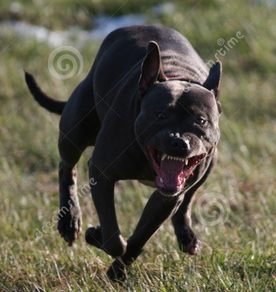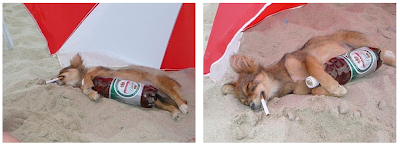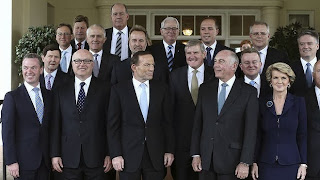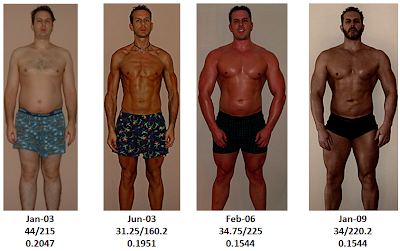For most people, dog attacks are not very common. But they happen occasionally, and the experience can be traumatic. Incidentally, they are also a good reason why I am not a big fan of barefoot walking or running. Broken glass pieces and nails can be a problem if you are barefoot; so can dog attacks.
The photo below, from Dreamstime.com, shows a charging dog. It reminds me of an incident many years ago where a dog attacked my two oldest sons, who were very young at the time. They were unsuspectingly playing at a park in Southern New Jersey, when I saw a dog running in their direction across the park. Part of what I will say in this post is based on experiences like that.
I should also say that I grew up around dogs. My grandfather had a farm that was managed by my uncle, and dogs were critically important in managing the farm. One problem we had was that domesticated pigs would often become feral, or would mate with wild boars, in some cases leading to a particularly vicious breed of large feral pigs. I was once attacked by one of these feral pigs while hunting. One of the farm dogs came to my rescue and probably saved my life.

If you are like most people, when you go walking outdoors, you do not carry a walking stick or a cane. Maybe you should. But if you don’t, thick-soled sneakers can be used in a reasonably effective defense in a dog attack situation.
Dogs attacks’ main targets: The faces of children
Dogs tend to be loyal friends, but they must be monitored for signs of aggression, and can be particularly dangerous to children. A significant proportion of dog attack victims are children 5 years of age or younger, who more often than not sustain injuries to the face, with secondary target areas being the hands and feet ().
At the time of this writing the web sites Documentingreality.com and Arbtalk.co.uk had some grisly photos of dog attack victims (, ). They show evidence that the face is often targeted, and some possible consequences of real dog attacks.
Artificial selection: Dogs and Moby-Dick
Modern dogs are descendants of wolves who came into contact with humans about 12,000 year ago. (This general date is often cited, but is the subject of intense debate, with DNA studies suggesting much earlier contact.) Wolves are apex predators; this was true also for wolves that lived around the time they first came into contact with humans. They hunt and live in packs, and rely on fairly complex body language, a variety of sounds, and a keen sense of smell to communicate.
Even being apex predators, wolves were no match for humans. Therefore, as humans and groups of wolves co-evolved, dogs emerged. Dogs evolved instincts that made them sociable toward and submissive to humans, particularly those humans who fed them and also asserted authority over them – those become their “owners”.
Humans, in turn, came to rely heavily on dogs for protection and hunting, and probably evolved instincts that are still largely unexplored today. For example, there is strong evidence suggesting that having pet animals, many of which are dogs, is generally health-promoting (, ).
The evolution of sociability and submissiveness traits is an example of what is often referred to as “artificial selection”, where animals and plants evolve traits almost exclusively in response to the selection pressure applied by humans. In the case of dogs, this was later taken to new heights through selective breeding; leading to the emergence of a variety of dog breeds, some for utilitarian purposes and others for pure vanity, each with very distinctive characteristics.
Interestingly, artificial selection applied by humans does not always produce more sociable and submissive animals. The opposite happened around the mid 1800s due to excessive hunting of sperm whales. The least aggressive were easier to kill, so they were overhunted. Over generations, this placed selection pressure in favor of the evolution of aggressiveness toward humans. The attack on the Essex by a large bull sperm whale, which served as inspiration for Herman Melville's novel Moby-Dick, was one of the first incidents that resulted from this selection pressure (). Whaling increased, and, predictably, attacks started becoming more and more frequent.
When a dog attacks, stand your ground in a non-threatening way
Dogs, like wolves, are territorial animals. Many dog attacks are likely motivated by humans invading what a dog perceives as its territory at a given point in time. I mentioned earlier in this post that a dog once attacked two of my children. They were playing at a park during the winter. Nobody else was there. I saw this large black dog running from a distance in their direction, and I immediately knew that it was trouble. The dog probably saw us as invading its territory.
Having grown up surrounded by dogs, I pretty much knew what to do. I walked toward my children and placed myself between them and the charging dog. I told the children not to move at all, just freeze. The dog came running until it realized that we were not running. It was a “fake charge”, like most are. It stopped close to me, and barked very aggressively, coming closer. I was wearing boots. I raised one of my boots toward the dog’s snout, and when it bit it, I pushed the boot against its snout.
Here is where I think most people would tend to make a key mistake. They would probably try to hurt the dog to scare it off, by, say, kicking the dog as they would kick a soccer ball. The problem is that, because the dog is a lot faster than they are, if they do that they may end up missing the dog entirely and worse - they may end up losing their balance and falling to the ground. This is when dogs can do the most damage, since they would go for the face of the fallen person.
As a side note, often you hear that dogs attack the throat of their human victims, but that is not what the statistics show. Most victims of dog attacks display injuries on the face and extremities. The "myth" that dogs target the throat is probably based on the notion that dogs attack humans because they see them as prey. However, with exception of feral dogs such as Australian dingos, evidence of dogs preying on humans is very rare. I've reviewed many dog attack photos for this post, and could not find one with evidence that the throat was targeted.
So I pushed my boot against the dog’s snout a few times, firmly but not with the goal of hurting the dog, and did not do anything threatening toward the dog otherwise. This calmed the dog down a bit, but it was still acting aggressively and would not go away. Sometimes firm commands to "seat", "stop", "go away" make the dog react submissively. I tried them but they didn't work; instead they probably made the dog more excited. Then I did what probably is the one thing that most land animals instinctively fear from humans …
Sapiens the thrower
I picked up a few pieces of ice from the ground and threw at the dog. One piece of ice hit the dog on the side of its body; a couple of others were glancing blows. As a result the dog became visibly confused and submissive (telltale sign: tail between the legs), and ran away. Here is where another big mistake may happen. People may try to hurt the dog and become too excited when throwing objects at it. In doing so, they may end up not only missing the dog with the flying objects that they are throwing, but they may also excite the dog, and face another attack.
The best approach here is to focus on having whatever you are throwing at the dog land on top of or as close to the dog as possible; explicitly without trying to hurt it, in part because this improves your aim. Having flying objects coming from you toward the dog is enough to trigger the dog’s instinct to get out of the way of “Sapiens the thrower”. Moreover, if you don’t try to hurt you’ll be relatively calm, displaying the type body language that will trigger submissiveness.
I’ve long suspected that throwing has been a key component of Sapiens’ climb to the top of the food chain, to the point that all land animals have an instinctive fear of humans – even large predators, and much bigger animals such as elephants (as long as they are not “in musth”). One short video has been circulating on YouTube for years; it has various hunting scenes where primitive spears are used (). Many find this video cruel. It clearly shows the enormous evolutionary advantage of humans being able to throw pointy things at other animals. If humans happened to live when Tyrannosaurus rex was around, there is no doubt in my mind that the latter would be the prey.
Keep your face away and your hands closed
Typically you’ll avoid a full-blown dog attack by only standing your ground for a while and not acting aggressively toward the dog. After a short standoff period, you’ll just walk away unharmed. Unfortunately this may not happen if you are facing a dog that has been trained to attack. In this case, having a stick or something like it will help a lot. (In circus acts lions are “pushed around” by trainers holding objects like sticks and wooden chairs; sometimes that doesn't end well - .) If you don’t have one it would be useful to be wearing shoes that can withstand several bites. If not, you can use a piece of clothing, such as a bundled jacket, as a shield.
If you have a stick, or something like a stick, you should not try to hit the dog with it. You should place it near the snout, and push the stick against it each time the dog bites. If you do this calmly and firmly, without trying to hurt the dog (remember, the dog is a lot faster than you are), you will probably discourage biting after a while, turning the attack into a standoff.
What if you don’t have anything with which to defend yourself at first, and a dog attacks you? Keep your hands closed into fists, to avoid having fingers bitten off, and do your best to keep the dog away from your face. As desperate as these situations may be, try to be calm and look for objects that you can use to push the dog away, that you can throw at the dog, or that can be used to wrap around your arms. Frequently there will be objects around that can be of use – e.g., sharp stones, glass bottles, pieces of canvas, loose pieces of a fence, a hose, a tree’s branch. If you fall, try to stand up right away. Very likely you'll sustain injuries to your arms, and possibly legs.
Military and law enforcement personnel are often trained on fighting techniques to handle dog attacks barehanded, such as neck cranks, sharp blows to the throat of the animal, and blinding techniques. I am not sure whether these would be really useful to the average person. In any case, this post is not aimed at military and law enforcement personnel who deal with dog attacks on a regular basis.
Eat beef liver
Beef liver is nature’s super-multivitamin. (Beef heart is just as nutritious.) Dogs, like wolves, have an exquisite sense of smell. If you have seen one of the documentaries about the groundbreaking research by Shaun Ellis (a.k.a., “The Wolfman”), you probably know that wild wolves tend to strongly associate consumption of organ meats with very high status in a pack, to the point that they will instinctively act submissively toward humans that consume organ meats. It is quite possible that dogs do that too. So if you eat beef liver, maybe a dog will “think twice” before attacking you.
Offer the dog a cigarette and a beer
Most dogs can become aggressive from time to time, but not dogs that know how to chill. Therefore, you may consider carrying special dog cigarettes and beer around - only some brands work! Okay, a clarification: the "eat beef liver" advice is not a joke, nor are the others above it.

Notes and acknowledgements
The “charging dog” photo is from Dreamstime.com. The “drunken dog” montage was created with photos from the blog Agrestemundica.
Cesar Millan's site has a number of good suggestions on how to handle dog attacks (). However, I personally think that the way he handles dogs (e.g., often with open hands) is dangerous if copied by an inexperienced person. There is a great deal of "hidden" information that is conveyed to dogs by nuances of Cesar's body language. Those nuances are difficult to copy by an inexperienced person.
An interesting source of information on how to handle dog attacks is the web site Fightingarts.com (, ).
























